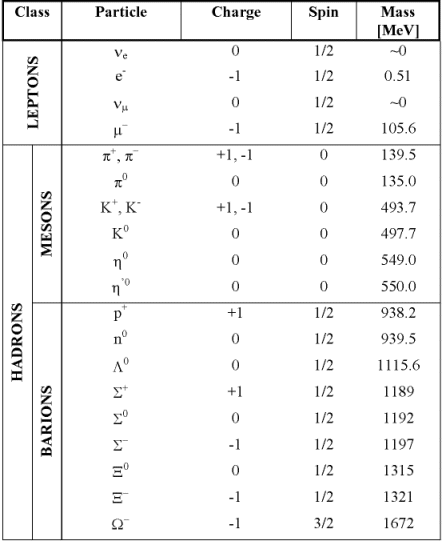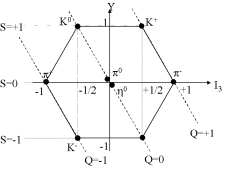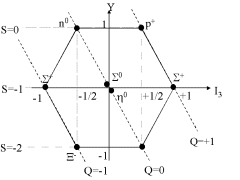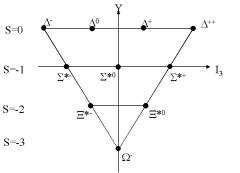

Octet of mesons spin s=0

Octet of barions spin s= (1/2)

Decuplet of barions spin s = (3/2)
Supermultiplets allowed to predict
existence of new particles.
Quark hypothesis was "on the way".
In the beginning of '60 of last century, Gell-Mann and Neewman independently noticed, that due to the same spin, parity and strangeness, and due to similar masses, hadrons can be grouped into so called multiplets, which than are grouped into supermultiplets consisting of singlets, octets and decuplets. Introducing values descibing the multiplicity - like isospin I=(N-1)/2 and hypercharge (Y=B+S, where B - baryon number, S - strangeness) - and after plotting the dependencies of these values (to be exact hypercharge vs. isospin's projection on "selected direction" I3) characteristic geometrical figures can be obtained. That situation was similar to the first trials of classification of chemical elements into Mendeleev's table.
Classification of particles (which were known in 60-th of XXth century)
|
|
Octet of mesons spin s=0
Octet of barions spin s= (1/2)
Decuplet of barions spin s = (3/2) Supermultiplets allowed to predict |